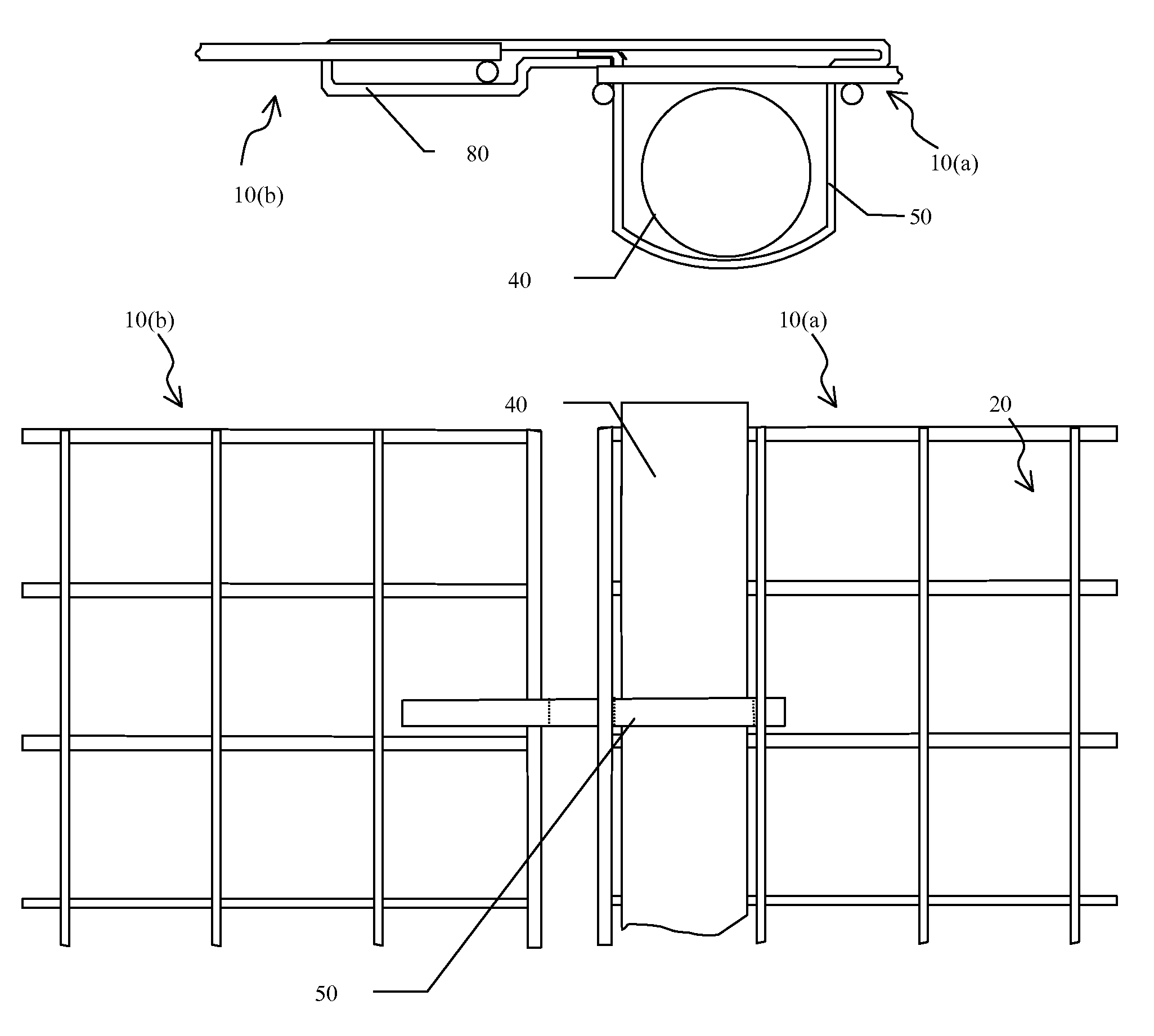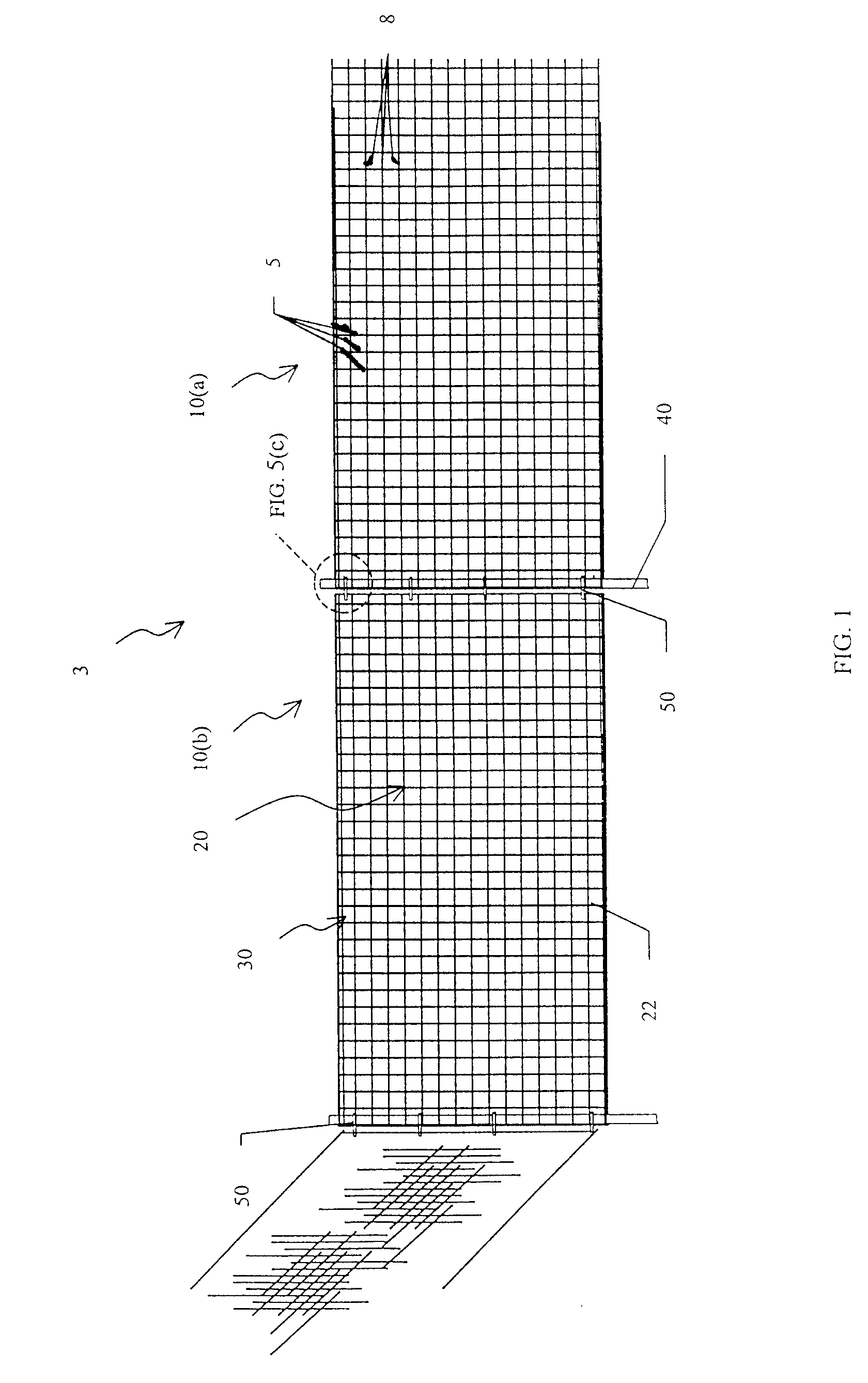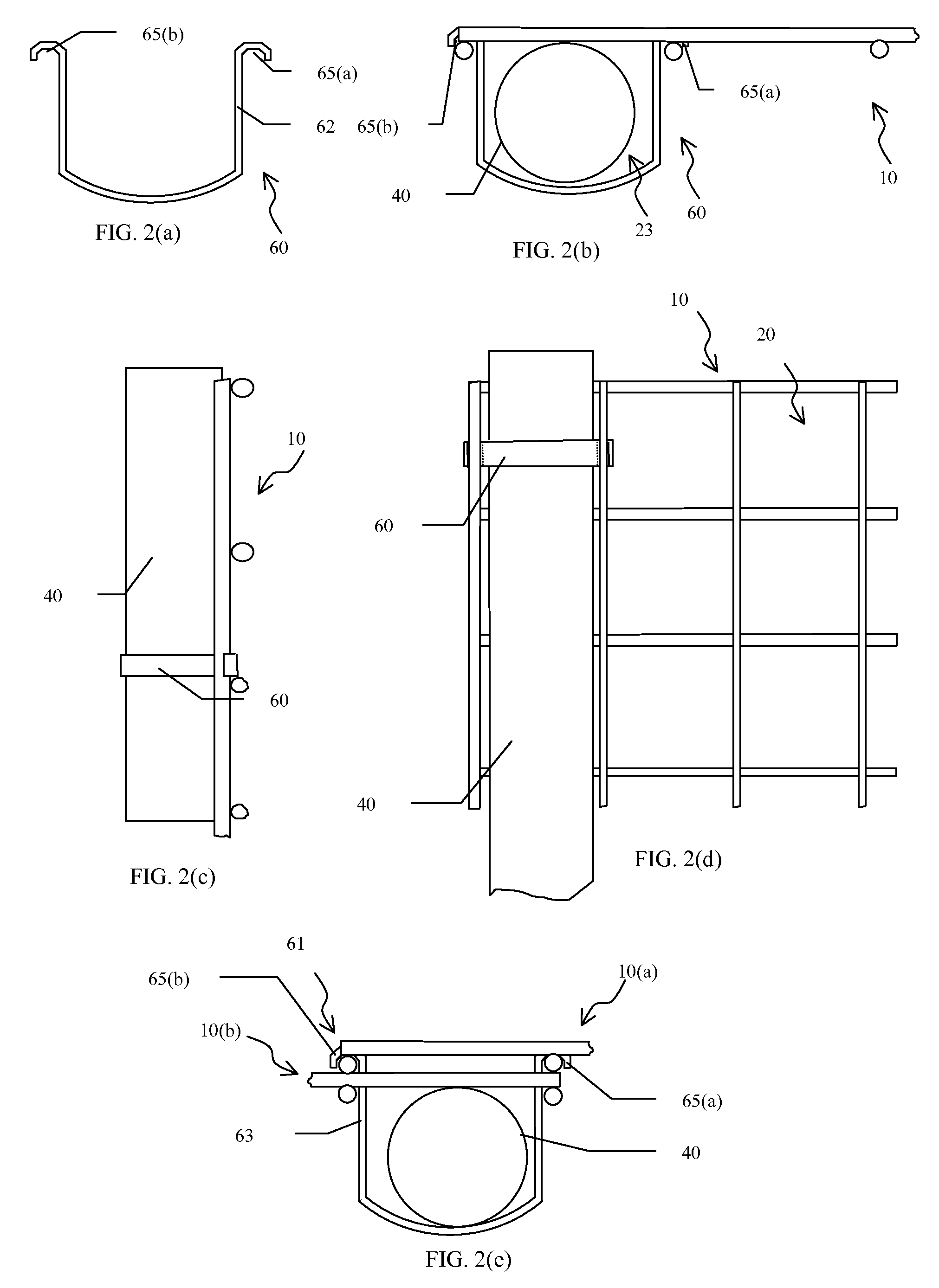Fence assembly and related methods
a technology of modular fences and assembly methods, applied in the field of modular fence systems, can solve the problems of exacerbated handling and storage problems, high labor intensity, and high labor intensity, and achieve the effects of reducing the overall cost of the system, reducing labor intensity, and reducing labor intensity
- Summary
- Abstract
- Description
- Claims
- Application Information
AI Technical Summary
Benefits of technology
Problems solved by technology
Method used
Image
Examples
embodiment 50
[0063]FIG. 3(b) illustrates yet another bracket embodiment 50 of the system. Similar to the housing used in FIG. 3(a), bracket 50 incorporates an engagement housing 80 to secure the adjacent panel. However, instead of the open style pocket 23 used in FIG. 3(a), the bracket of FIG. 3(b) utilizes a closed style pocket 24. Therefore, although the housing 80 is formed along one side of the bracket in FIG. 3(a), the housing 80 is connected to the opposite side of the bracket in FIG. 3(b) via a strip of metal along the top of the bracket which forms the closed style pocket 24. The bracket 50 is preferably installed by flexing the housing 80 around a spaced apart wire of one of the panels 10. The closed style pocket 24 is then preferably inserted, pushed, or similarly positioned through the spaced apart wires of the other panel 10 to provide a receiving pocket 24 for the post 40 that secures the post 40 to the panel 10.
[0064]A tab 55 or similarly formed element of the bracket 50 can be pro...
embodiment 150
[0067]FIG. 6(a) is a perspective view of another bracket embodiment 150 which further adds cut out areas 160(a), 160(b) within the wall of the bracket 150 permitting the bracket 150 to be installed around one of the horizontal wires 161 of each of the panels, which can further restrict the movement of the bracket 150 and therefore movement of the panels within the structure. In this embodiment, the bracket 150 includes a first pocket 17 and a second pocket 18 configured to receive the vertical post 40. The first and second pockets 17, 18 are spaced apart from each other and formed along the same side of the bracket 150. The first and second pockets 17, 18 are formed at least in part by a first pair and second pair of generally parallel sides, respectively. The sides are connected to the engagement surfaces 65(a1), 65(b1) and spaced apart from each other. The bracket 150 also includes a first housing 31 and a second housing 32 spaced apart from each other and formed along the other s...
PUM
 Login to View More
Login to View More Abstract
Description
Claims
Application Information
 Login to View More
Login to View More - R&D
- Intellectual Property
- Life Sciences
- Materials
- Tech Scout
- Unparalleled Data Quality
- Higher Quality Content
- 60% Fewer Hallucinations
Browse by: Latest US Patents, China's latest patents, Technical Efficacy Thesaurus, Application Domain, Technology Topic, Popular Technical Reports.
© 2025 PatSnap. All rights reserved.Legal|Privacy policy|Modern Slavery Act Transparency Statement|Sitemap|About US| Contact US: help@patsnap.com



